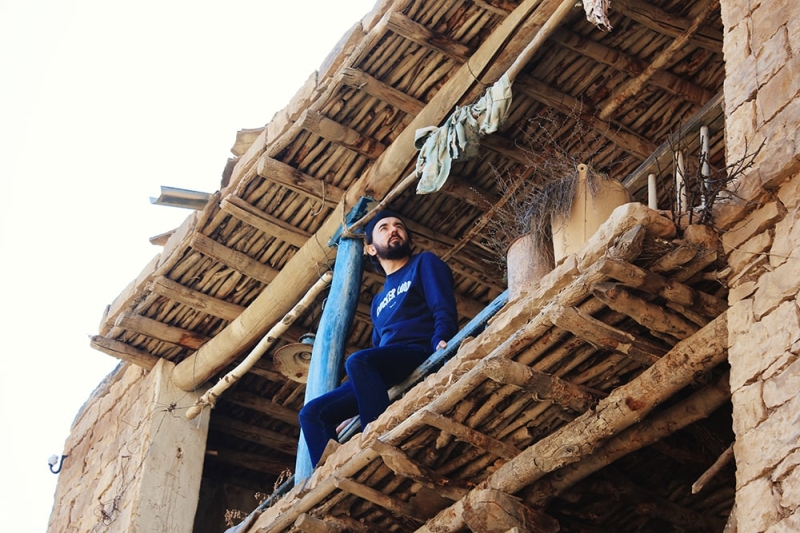
If you are not happy about the arrival of autumn because there are months of rain and slush ahead, do not rush to be sad. Compared to some places on our planet, the city of St. Petersburg could become famous for being dry and sunny. Today we want to tell you about the rainiest corners of our planet, which became special thanks to their unbridled nature!
1. Mouseynram, India
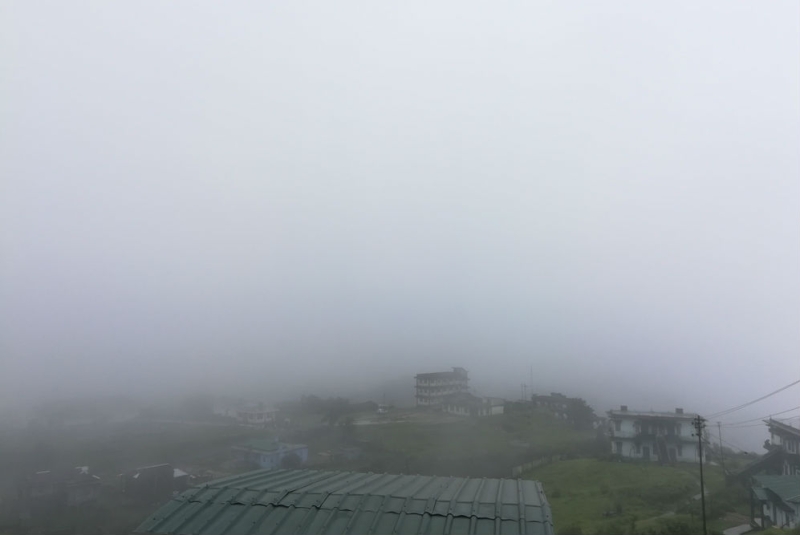
India can safely be called the rainiest country in the world, because the first two lines of the ranking in terms of annual precipitation are occupied by its cities. The small highland village of Mawsynram is in the lead. According to the Guinness Book of Records, 11,871 mm of precipitation falls there per year, and this is an almost completely flooded five-story building. Of course, not all of them happen at once, but for comparison, in the rainiest city in Russia – Severo-Kurilsk – for a year account for 10 times less. It’s worth going to Mawsynram to feel the special mysticism of the streets shrouded in fog, along which strange fish seem to be swimming. This is exactly what the locals look like wearing special wicker headdresses that protect them from the rain: a traditional Asian cone-shaped hat is woven in such a way that it covers the head on one side and the back on the other, and is shaped like half a pistachio shell.
2. Cherrapunji, India
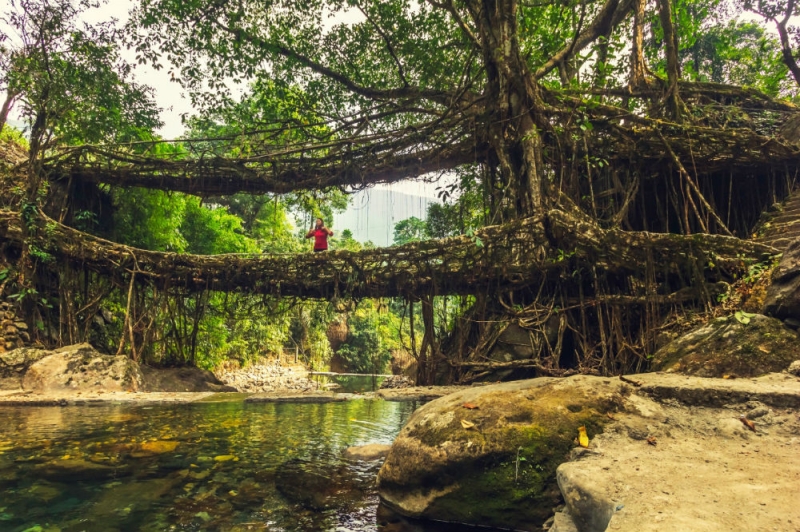
Literally 10 km from the record holder is the city that ranks second in the ranking – Cherrapunji. Precipitation there is only slightly less, 11,777 mm per year. The symbol and main attraction of the city has become an unusual invention of local residents – living bridges. The fact is that ordinary bamboo quickly deteriorates in such a humid climate; as a result, the Indians came up with the idea of throwing rubber tree roots across rivers and ravines. More precisely, they first build a bamboo bridge, along which they then send out young adventitious roots. After the roots “reach” the opposite bank, they grow into the ground. By the time the barbuk finally gets wet and becomes unusable, the living crossbars form a durable structure. Such a bridge “grows” for about ten years, but then lasts for a hundred.
3. Tutunendo, Colombia
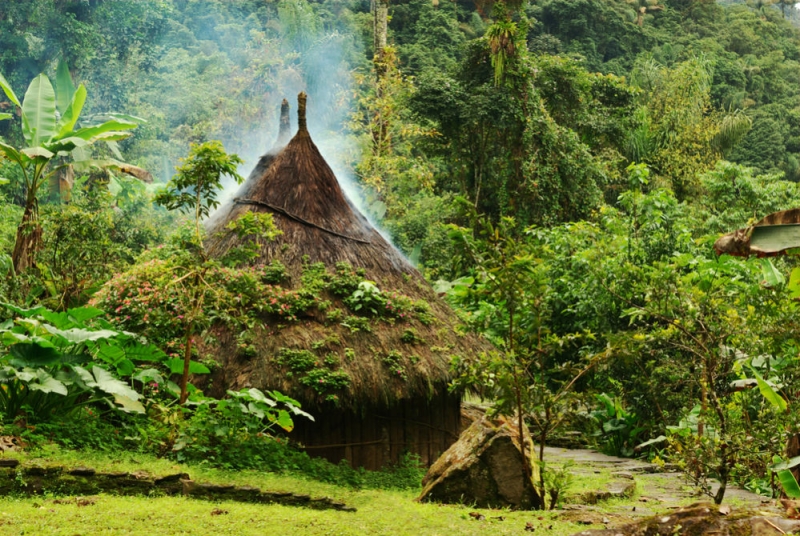
The third place in the rainiest place is occupied by the village of Tutunendo, which is located in western Colombia in the highland region of Choco. In this small settlement, an average of 11,770 mm of water falls annually, and in 1974 an absolute record for our planet was recorded – 26,303 mm. However, the weather does not deter, but rather attracts tourists. The fact is that it rains here mainly at night, and during the day you can endlessly walk through the mountains immersed in greenery, rafting down rivers and swimming in waterfalls. Air humidity in the region tends to 100%, so the nearest city of Quibdo bears the title of the wettest city in the world.
4. Cropp River, New Zealand
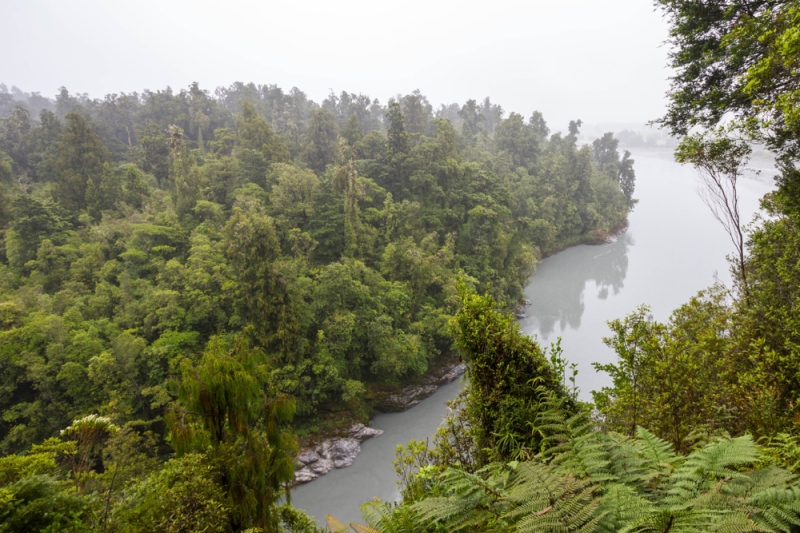
The next rainiest place on earth is in the highlands of New Zealand’s South Island. The nearest city is Hokitika, located on the coast, from where you can go on a tour to a nine-kilometer stretch of the Kropp River. The high ranking for this place is due to 11,516 mm of precipitation per year. In December 1995, a New Zealand record was recorded here – 1,049 mm of rain fell in 48 hours. It’s worth coming here for the nature. The deep rivers of this region flow through picturesque canyons: the purest blue water is literally illuminated by white rocks and reflects overhanging trees.
5. Bioko Island, Equatorial Guinea
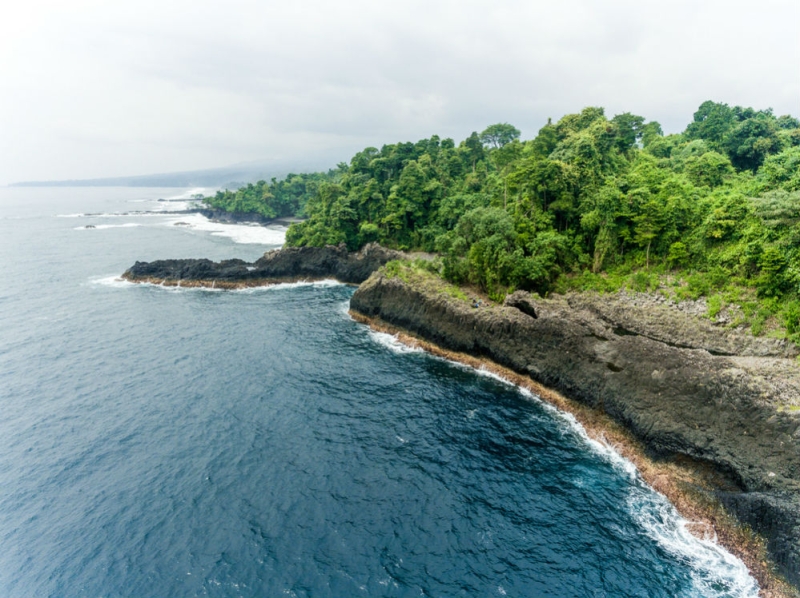
The title of the wettest place in Africa goes to a region that is actually separated from the continent by a fairly wide strait. Bioko Island receives 10,450 mm of rainfall per year, making its nature incredibly rich and diverse. This small island of volcanic origin boasts amazingly beautiful black sand beaches and equally beautiful golden bays with coral reefs. There are jungles and waterfalls, high rocky cliffs and a huge lake in the crater of a volcano.
6. Debundsha, Cameroon
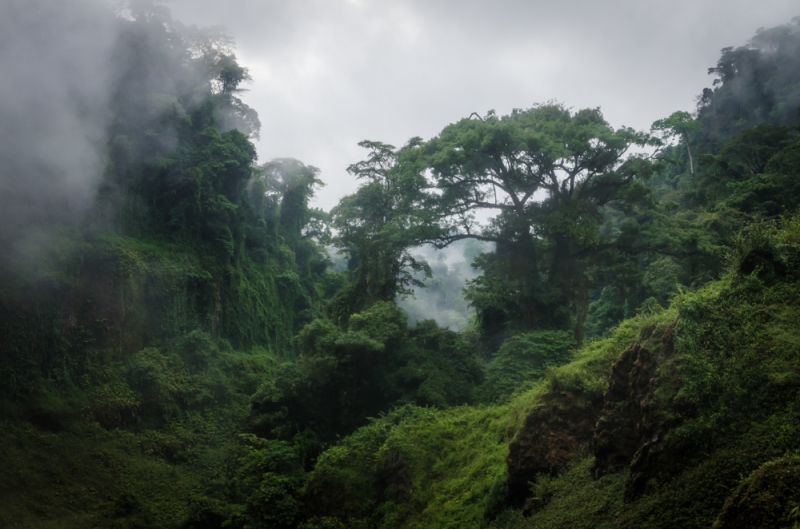
In Africa itself there was also a rainy place. Sixth place in the ranking is occupied by the village of Debundsha in Cameroon. We tend to associate Africa with deserts and arid savannas, but close to the equator, the continent rains for most of the year with a total rainfall of 10,299 mm. Again, this is due to the high mountains that block the clouds. Not far from the village there is a beautiful volcanic lake. Another attraction of the place is the cape of the same name, on which stands a lighthouse installed by German colonialists back in 1904.
7. Big God, Hawaii
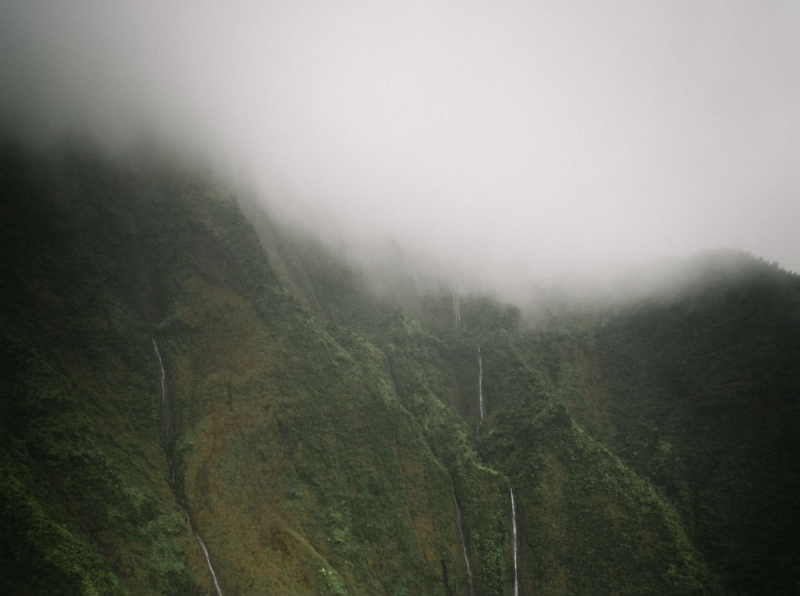
The next title of wettest place on earth went to the highland peat bog on the Hawaiian island of Maui, located on the border of Haleakala National Park. There is 10,272 mm of precipitation per year. Rainwater is evenly distributed along the mountainside, forming a web of thin waterfalls that tourists come to admire.
8. Waialeale, Hawaii
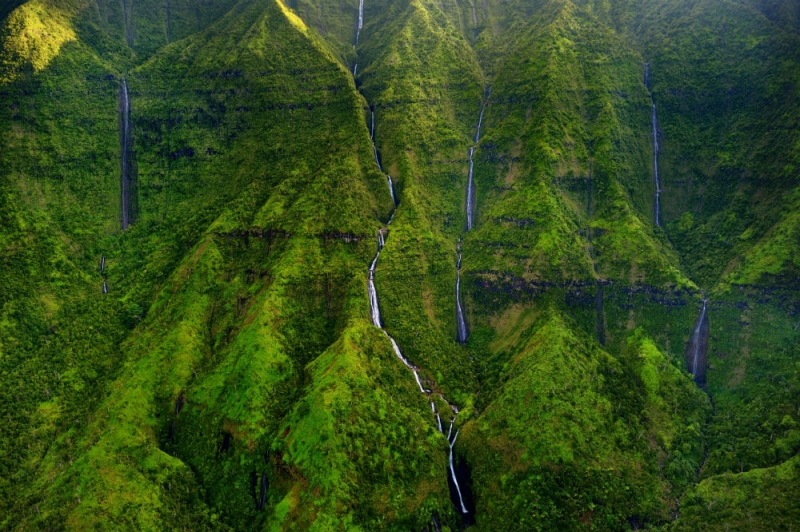
On the neighboring island of Kuai there is an extinct volcano, which is only slightly inferior to the previous line in the ranking in terms of precipitation – 9,763 mm falls per year. The peculiarity of this high-mountain plateau is that the rains there do not come in showers, but in light drizzle, which is why the top of the volcano is often shrouded in fog. But when the clouds clear a little, the brightest rainbows light up in the sky, which have become the symbol of the Hawaiian Islands and are emblazoned on the license plates of cars in the Aloha State.
9. Kukui, Hawaii
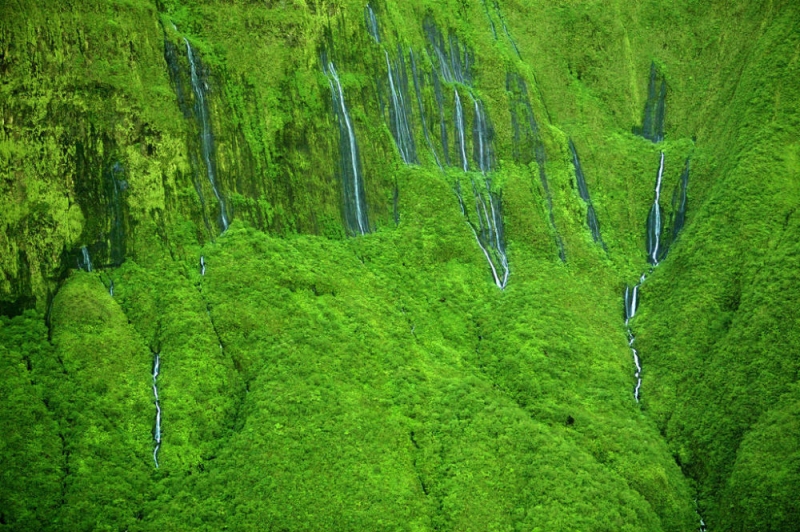
Hawaii appears in the top 10 rainiest places on the planet three times – Mount Kukui on the island of Maui takes ninth place. 9,293 mm of precipitation per year makes the soil marshy, so special wooden paths are built for trekking, rising above the ground. The scenic path runs along ridges, through meadows and through moss-covered forest.
10. Emeishan, China
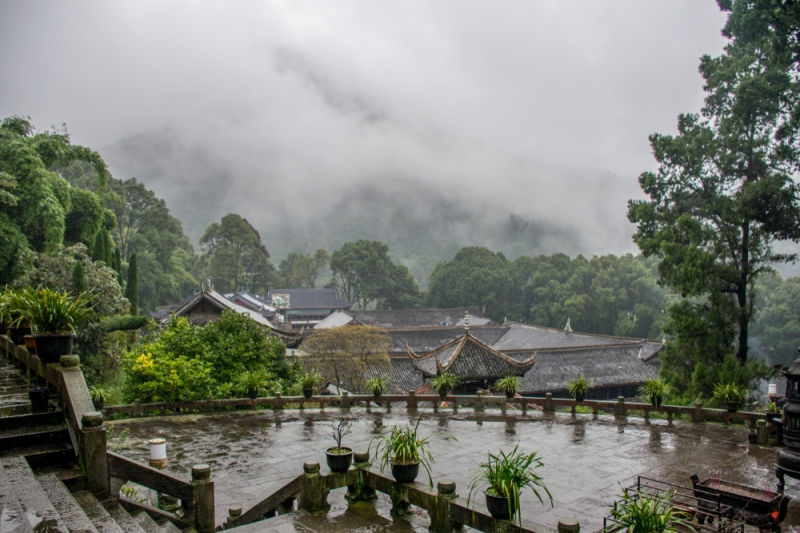
The “abode of clouds” in Sichuan province closes the top ten rainiest places. Mount Emeishan is the highest of the four sacred Buddhist mountains in China. It is also the wettest region of the country, where 8,169 mm of precipitation falls annually. The magnificent temple and golden statue of Buddha sitting on elephants appear to float above the clouds, while lush green forests stretch below the slope. Neighboring residents call this place the most peaceful on earth, and the frequent sound of rain only emphasizes the peaceful atmosphere.
All these territories, although located far from each other, on different continents, actually have a lot in common geographically. These are high mountains in close proximity to the ocean and the equator. The hot tropical sun evaporates moisture from the surface of the ocean, the mountains slow down the movement of moist air masses, forcing them to gather into abundant clouds and rain on the slopes. The warm climate and abundance of greenery break the stereotype that rain is dull. On the contrary, here he clearly shows that nature is beautiful in all its manifestations.
A convenient site for finding a hotel – OneTwoTrip.

